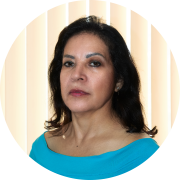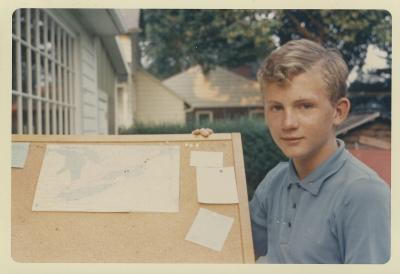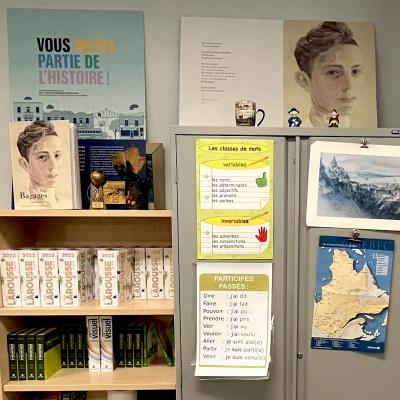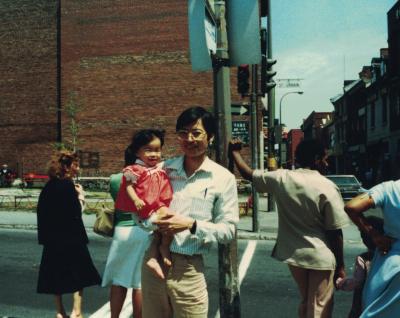For three generations, a Venezuelan family has been keeping their country’s folk music alive in Montréal, with multiple bands and a music school.
Musique folklorique vénézuélienne
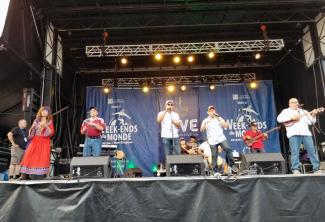
Canada’s first Venezuelan communities began arriving in Canada, and Montréal specifically, in the late 1960s, according to the Canada Yearbook (Statistics Canada) and other sources. Since then, multiple waves of Venezuelan immigration have brought many artists to Canada, including musicians.
Ender Enrique Calixto Acosta is the head of a multigenerational family of musicians from Venezuela based in Montréal. He is committed to keeping the traditions and culture of his native country alive, passing them on to new generations, and even introducing them to people from other countries.
In his youth, Ender Calixto began working as a car mechanic. Driven by a love of Venezuelan folk music, he juggled his job at the garage with music gigs, which he’d been playing since he was a teen. When he speaks about his trajectory as an artist, Calixto makes it perfectly clear that his true vocation is playing music and writing songs. He wrote his first song at age twelve, and by fourteen he had mastered the instruments used by folk musicians in his home state of Zulia, including maracas, the cuatro (a small four-string guitar), and the furro (or “quijada de burro,” which means “donkey jaw,” a friction drum). In Venezuela, Calixto was a member of many Gaita bands, including El Gran Bulevar, Vuelvan Caras, Sentir Zuliano, Koquimba, Kaos, and Racoa. With Racoa, Ender Calixto released multiple albums.
Moving north
Ender Calixto

Venezuelan traditional music in Québec
Starting a new life in Montréal was hard at first, and breaking into the local music scene took longer than expected. Like all immigrants, Ender Calixto first had to integrate into Québec society and find ways to support himself and his family. As this process unfolded, Calixto met many people, including fellow Venezuelans, who would be instrumental in launching his career in Québec. Through these connections, he got to know a rich and diverse arts community—and a vibrant music scene. Many of the artists he met came on board when Calixto created his own Venezuelan folk music group in 2005: Gaita Nuestra.
Calixto describes Gaita Nuestra as a “Tamborera” group, in reference to the style of folk music popular on Venezuela’s west coast and known for its strongly rhythmic, catchy style. The flavour played by Gaita Nuestra is enriched by multiple cultures and nationalities: the band’s eleven musicians include Venezuelans alongside musicians from all over, including Colombia, Peru, and Québec.
Music: A family affair
Montréal music journalist León Magno Montiel notes that every member of Ender Calixto’s family plays music. And in fact, the Calixto family forms the core of Gaita Nuestra. Ender Calixto’s son Ender Alberto and his daughter Shiireé play percussion, while Margarita Calixto Pike plays maracas and sings—Margarita is his granddaughter, born in Montréal to parents Ender Alberto and Amanda Pike, who is Canadian. Most of the musicians in the band are of Latin American origin, but not all: the drummer, for example, is from Québec.
Calixto says he created Gaita Nuestra to preserve musical traditions for Venezuelans living in Québec, to pass them on to their children. The group has also introduced Venezuelan folklore to Montrealers from all over. As you can read on the Sabor gaitero website, Calixto’s desire to pass on the rudiments of folklore from northwestern Venezuela to second- and third-generation Venezuelans living in Québec inspired him to open a gaitero school. There, he teaches the instruments used in the Gaita groups of his country to children of Venezuelan descent living on Montréal’s South Shore.
In 2015, Latin Awards Canada named Gaita Nuestra “Criollo Group of the Year.” And in 2018, Ender Calixto recorded the song “Humildes y Sencillos,” ranked sixth of the top twenty most important Gaita compositions by the Venezuelan website Qué pasa.
A new band
Musique folklorique vénézuélienne 2
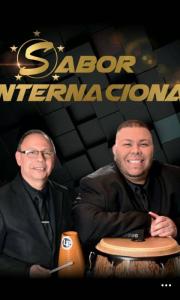
In 2015, Ender Alberto, Ender Calixto’s son, started playing music with a group of his own called Sabor Internacional. This ensemble features musicians from all over the Americas, including Canada, Colombia, Cuba, Peru, the Dominican Republic, and Venezuela. Its sound is a fusion of America’s many musical styles, offering a great example of how new music in Montréal develops as a blend of rhythms—perfectly natural in such a multicultural society. With a group of musicians from across Latin America, Sabor Internacional plays virtually all popular styles, including salsa, merengue, bachata, and cumbia.
Since it formed, Sabor Internacional has played public events and private parties in Ottawa and around Québec. Among their biggest shows were the Week-ends du monde Festival at Parc Jean-Drapeau, where they played for the Colombian, Salvadoran, and Venezuelan national holidays. Sabor Internacional also won a new talent of the year award at the 2018 Latin Awards Canada.
Some experts believe that the Venezuelan Gaita (also known as the “Gaita Zuliana”) is of African origin, while others claim it was brought by the Spanish colonizers. The most popular theory holds that the style grew out of the intermingling of African, Spanish, and Indigenous cultures.
In the state of Zulia, Venezuela, the Gaita was originally sung by women who formed a dance circle around drums. Later, flutes and maracas were added, and in the 19th century, clarinets. In some regions of Venezuela and in Venezuelan communities outside the country, this music is associated with Christmas, although it is now played throughout the year.
In Venezuela, the Gaita was declared a national heritage of cultural and artistic interest in 2014, due to its importance to Venezuelan culture and identity. Today, it is a popular musical genre performed by bands of both men and women. Song lyrics cover a wide range of topics including love and religious figures, humorous stories, and political grievances.
